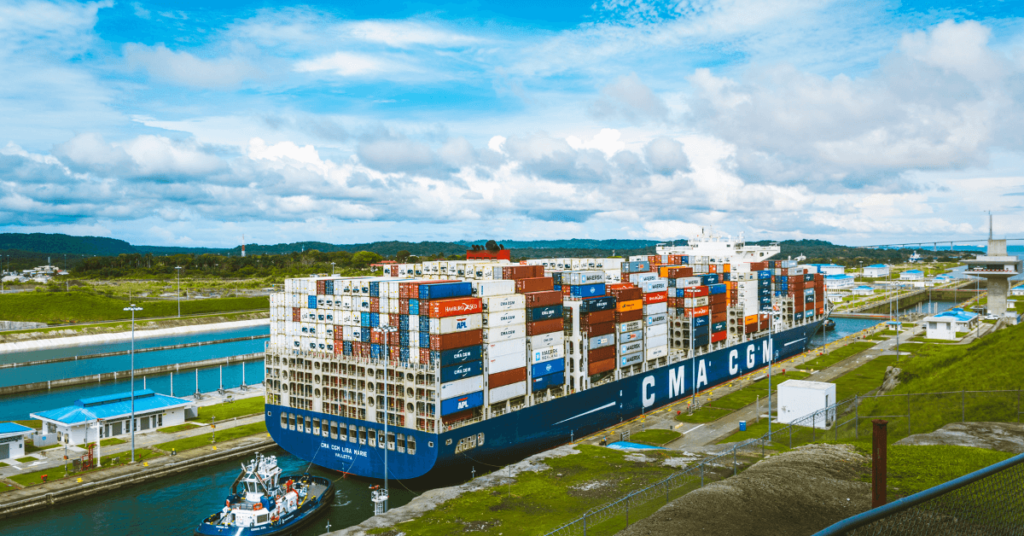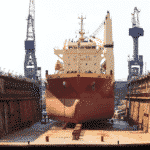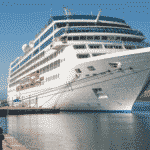Why Nautical Mile and Knot Are The Units Used at Sea?
Nautical fiction and other adventure stories are often filled with horrifying instances of ships being stranded at sea- due to storms and technical failures- not knowing the right direction. It’s true that navigation in the open ocean is significantly difficult, unlike on land.
The sea, with its vastness and unpredictable chaos within, always offers an uncertain journey for the captain and other sailors. For navigators, while the land provides several fixed visible cues in the landscape, the sea does not leave any useful, distinguishing features.
Due to this complexity, marine navigation has evolved significantly since the origin of humankind, finding various methods and measurements to save the life of mariners embarked on sea travel.
For many, the first encounter with the measurements being followed at sea raises eyebrows, wondering why they need to differ from miles and kilometres used while talking about land. Unlike measuring distance and speed on the ground, sailors use nautical miles and a knot for measurements during the sail.
At sea, in navigational calculations, the statute mile is considered an arbitrary length of no particular significance. And in particular, the replacement of the ordinary measurement with nautical miles and knots at sea helps the Mariners to read charts that use latitude and longitude quickly.
Currently, the nautical mile developed from the geographical mile is used as the unit of measurement by all countries for air and sea navigation. It is also used in treaties and International law to define the limits of territorial waters.
What is Nautical Mile?
A nautical mile, a unit of measurement defined as 1,852 metres or 1.852 kilometres, is based on the earth’s circumference and is equal to one minute of latitude.
A mile on land equals 5280 feet, while a nautical mile equals the one-sixtieth degree of latitude. It varies from 6046 feet on the Equator to 6092 feet at a latitude of 60°. This difference occurs as the earth is not a perfect sphere but an oblate spheroid.
If one is to pick a part of the earth after cutting the planet in half at the equator and consider the equator as a circle, it can be divided into 360 degrees.
Then, one degree can be split into 60 minutes, of which one minute of arc on Earth is one nautical mile. One nautical mile is slightly more than a statute mile (1 nautical mile = 1.1508 statute miles).
According to the English measurement system, a nautical mile equals 1.1508 miles or 6,076 ft.
What is Knot?
Then comes the knot. Of course, we are not talking about sailing knots, such as Figure-8 Knot. A nautical knot is a unit of speed equal to one nautical mile per hour (1 knot = 1.15 miles per hour) or approximately 1.15078 mph.
Similar to the speed and distance measurement on land, the nautical mile and knot explain the movement of a vessel at sea. For instance, a boat or ship travelling at 15 knots could go 15 nautical miles per hour.
History of Maritime Navigation
Since the beginning of ocean navigation, several methods have been used to make age through long and vast seas easier. Many traditional practices, using geometry, astronomy and even special instruments, helped sailors navigate their destinations.
In ancient times, long before the ship’s clock became common, sailors relied on time derived from the position of the sun, moon, and stars- now known as Celestial navigation.
Sometimes, in addition to their know-how, luck protected them when they ventured out into the uncharted, dangerous waters.
In the later periods, the mariners succeeded in developing charts depicting distant shorelines and common features of the sea during voyages. According to historical records, such charts produced in the earlier period were marked with simple outlines of coastlines to support written or oral directions.
In addition, compasses, astrolabes, and callipers were ocean navigators’ tools in earlier times. The Mariner’s Compass, one of the earliest navigational tools and an early form of the magnetic compass, had been used widely in earlier periods.
Primarily, this compass was used to determine the direction of the wind when the sun was not visible. Similarly, the cross-staff, astrolabe, and quadrant were in use to help sailors choose latitude in several stages of maritime navigation.
Phoenicians are the first Western civilization to have developed the art of navigation at sea thousands of years ago. Phoenicians relied on primitive charts and observations of the Sun and stars to navigate their vessels to destinations.
In the later period, the Phoenicians and their successors, the Carthaginians, also invented a tool known as the sounding weight. Made of stone or lead, this bell-shaped tool had a long rope attached to the tallow.
Sailors used to lower this weight into the bottom of the sea to determine how deep the waters were and, using this measurement, to estimate how far they were from the land.
In addition, the tool, with the help of the tallow inside, could pick up sediments from the seabed, which enabled expert sailors to decide the location of their vessel.
However, centuries passed before using a standard method to measure the distance and speed during navigation at sea. Many new techniques and methods were experimented with from time to time, making marine navigation more meaningful.
Until the fifteenth century, coastal navigation was mostly practised since the open sea voyages were limited to regions of predictable winds and currents. On the open sea, mariners mainly depended on dead reckoning— calculating one’s current position using a ship’s last position, speed, and direction.
Further ventures by the sailors were enabled by developing scientific and mathematically-based methods and tools in the following years.
The invention of the sextant, the chip log Chronometers, etc., made the calculation of latitude and longitude possible and much easier.
And the modern era saw the replacement of ancient navigational tools with electronic and technological equivalents and the determination of standard measures, including the Prime Meridian.
Marine navigation has become more systematic and easy with the help of new technologies, from Gyroscopic Compass to GPS.
History of Nautical Mile and Knot
Years after using several techniques to determine the position and speed of a vessel, British mathematician Edmund Gunter succeeded in enhancing navigational tools, including a new quadrant to define latitude at sea. Gunter claimed that the lines of latitude could be used as the basis for a distance measurement unit.
Eratosthenes and his successors had already assessed the circumference of the Earth, helping other mathematicians to build on it. Gunter proposed the nautical mile as one minute or one-sixtieth (1/60) of one degree of latitude (one degree is 1/360 of a circle, one minute of arc is 1/21600 of a circle).
Using the circumference of the Earth assessed by Dutch scientist WillebrordSnellius aka Snell- who assessed it at 24,630 Roman miles or 24,024 statute miles -Gunter defined a nautical mile as 6,080 feet (1853 meters), i.e. the length of one minute of arc at 48 degrees latitude.
Even decades after these developments, there was no standard definition of a nautical mile, and different countries had different definitions to follow until 1929.
In 1929, Monaco’s First International Extraordinary Hydrographic Conference accepted the international nautical mile as precisely 6,076 feet (1,852 meters). This standard definition of a nautical mile in use is accepted by the International Hydrographic Organization and the International Bureau of Weights and Measures.
The United States measurements were based on the Clarke 1866 Ellipsoid, and based on this calculation, a nautical mile was 6080.20 feet (1,853 meters).
Similarly, the United Kingdom defined the nautical mile based on the knot- unit of speed measured by dragging pieces of knotted string.
According to this, one knot was defined as one nautical mile, and one nautical mile represented 6,080 feet (1853.18 meters). However, the US and the UK abandoned their definitions in 1954 and 1970 and accepted the international measure of a nautical mile.
On the other hand, the term knot can be traced back to the 17th century, during which sailors used a device called the common log to measure the ship’s speed.
The common log was a device consisting of a wedge-shaped piece of wood and a coil of rope with uniformly spaced knots attached to the piece of wood.
During the sail, the piece of wood was allowed to float for a specific time after lowering from the back of the vessel, and also, the line was allowed to play out freely from the coil as the wood floated.
After some time, the line was pulled in, and the sailors used to count the number of knots on the rope between the ship and the wood to measure the speed of the ship.
Sailors concluded the vessel’s speed according to the frequent average measurements taken throughout the day.
With the help of advanced technologies, the knot measurements are determined using mechanical tow, Doppler radar, and GPS.
Calculation of Nautical Mile and Knot:
The nautical chart turns out to be one of the essential elements abroad the vessel once it sets sail. The fixed relationship between distance, speed and time helps sailors calculate the distance the ship is expected to travel in a given time.
The formula sailors use is 60 x D = S x T, which is expressed as 60D = ST.
Conversion of Kilometer to Nautical Mile – Formula
Check out the video for understanding the formula for conversion of a kilometre to a nautical mile.
Frequently Asked Questions
1. Why is a nautical mile different from a mile on land?
Nautical miles are used for measuring the distance travelled through the water. A nautical mile is a little longer than a mile on land. The difference arises as the earth is not a perfect sphere and is slightly flattened at the poles. A nautical mile is based on the earth’s longitudes and latitudes. Hence, one nautical mile is equal to one minute of latitude.
2. Is the nautical mile the same as the air mile?
The term air mile is internationally defined as a nautical mile. It is equal to 6076 ft or 1852 m. Hence, 100 air miles equal to 115.08 statute miles or 185.2 km.
3. Why is the term knots used?
The knot was a term earlier used as a length measure on the vessel’s log lines, which were used to measure the speed of a ship on the water. This line was marked at intervals by knots tied in the rope.
4. Why do sailors use knots?
The simple answer is that knots are easier to navigate since, unlike land miles, they are based on the earth’s degree of latitudes. One nautical mile is equal to one minute of latitude.
5. How many nautical miles can a ship travel in a day?
On average, sailboats can travel up to 100 nautical miles or 185 km in 24 hours when they sail downwind. If the engine is running, they can cover around 130 nautical miles in case of long journeys.
You might also like to read
- Nautical Law: What is UNCLOS?
- Annual Summary of Notices to Mariners: What is NP 247(2)?
- A Guide to Handling Garbage on Ships
- 5 Terms Every Mariner Should Know Under UNCLOS
- Audacious Open-ocean Ambush of Product Tanker in the Gulf of Guinea
- 10 Ships Sunk By Accident with Iceberg
Disclaimer: The author’s views expressed in this article do not necessarily reflect the views of Marine Insight. Data and charts, if used in the article, have been sourced from available information and have not been authenticated by any statutory authority. The author and Marine Insight do not claim it to be accurate nor accept any responsibility for the same. The views constitute only the opinions and do not constitute any guidelines or recommendations on any course of action to be followed by the reader.
The article or images cannot be reproduced, copied, shared or used in any form without the permission of the author and Marine Insight.
Do you have info to share with us ? Suggest a correction
Latest Shipboard Guidelines Articles You Would Like:
Subscribe To Our Newsletters
By subscribing, you agree to our Privacy Policy and may receive occasional deal communications; you can unsubscribe anytime.
















The nautical chart turns to be one of the important element abroad the vessel once it sets sail
What the hell ??? No proofreading here?
Good job. Thank you.
Due to climate change, an average rise in sea level of about 1 meter would mean a very small increase of the distance between degrees of latitude or longitude at the Equator, thus making the nautical mile very slightly longer. Or wouldn’t it ? (Just trying to think straight.)
The statement is incorrect, climate change does not affect the length of a nautical mile. A nautical mile is defined as 1852 meters and is not affected by sea level changes.
The question whether a 1m rise in sea level would make a nautical mile longer…
Well it depends if the tide is in or out!
Due to the pull of the moon a rise in sea level on one side of the earth is compensated by a drop on the other side. 🙂